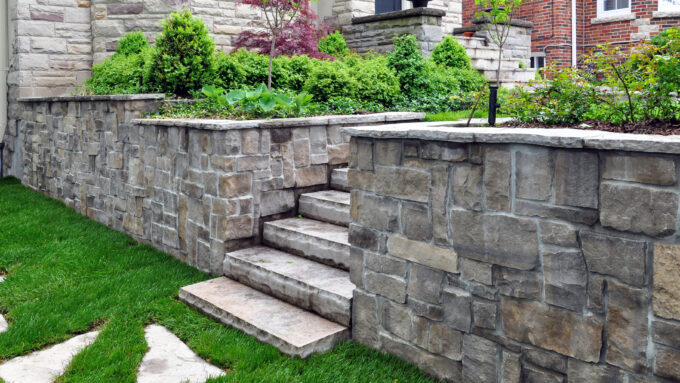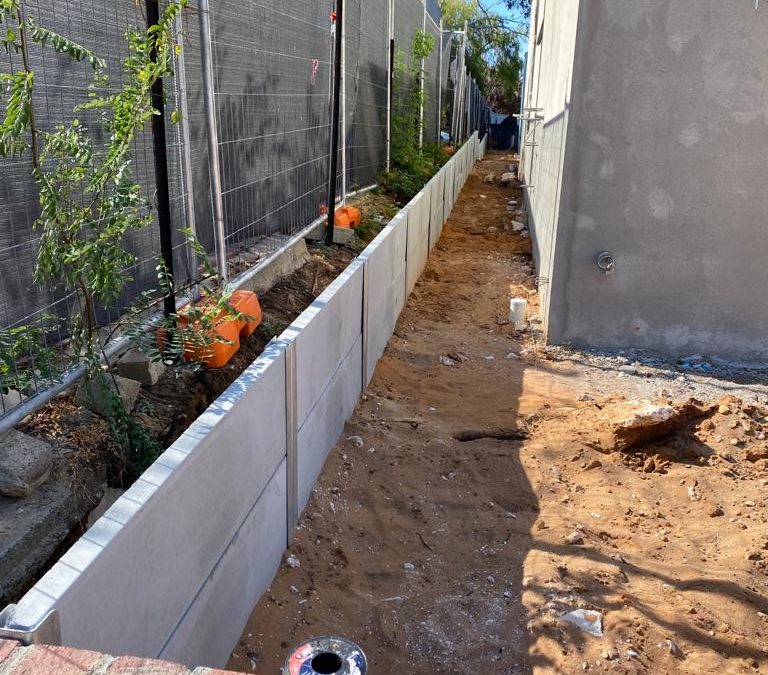Budget-friendly and Top Quality Retaining Walls Sunshine Coast: What to Know
Budget-friendly and Top Quality Retaining Walls Sunshine Coast: What to Know
Blog Article
Ensuring Architectural Honesty: The Significance of Effectively Constructed Preserving Wall Surfaces in Preventing Incline Failing
In the world of civil engineering and building and construction, the significance of properly constructed keeping walls in preventing incline failure can not be underrated. These frameworks serve as essential safeguards against the natural forces that can destabilize inclines and trigger possibly disastrous repercussions. Recognizing the precise design factors to consider, construction methods, and upkeep techniques linked with retaining wall surfaces is essential in guaranteeing their efficacy and long life. By exploring the elaborate interplay between these components, a much deeper comprehension of the essential duty that retaining wall surfaces play in protecting architectural stability and protecting against incline failure emerges. Retaining Walls Sunshine Coast.
Role of Retaining Walls in Security
The necessity of keeping wall surfaces in ensuring slope security is vital in civil engineering techniques. Retaining walls offer an important role in preventing dirt disintegration, taking care of water runoff, and keeping the structural honesty of inclines. By sustaining near-vertical or upright quality adjustments, preserving walls assist to redistribute lateral stress exerted by the dirt, consequently decreasing the risk of incline failing.
One trick feature of retaining walls is to counteract the pressure of gravity acting on the dirt mass behind them. This is attained via proper design and building, which takes into consideration variables such as soil type, wall elevation, water drainage stipulations, and potential surcharge loads. By successfully preserving dirt within specified borders, these frameworks help to stabilize slopes and avoid landslides.
Additionally, maintaining wall surfaces add to the aesthetic appeals of landscapes while supplying useful advantages. They can develop terraced degrees for landscaping, support streets or structures on hills, and boost the total use of sloped surface. Fundamentally, maintaining wall surfaces play a crucial function in preserving slope stability and ensuring the safety and long life of civil design jobs.
Elements Influencing Wall Surface Performance
Aspects that influence the effectiveness of retaining walls consist of dirt residential properties, wall design, and external lots. Soil residential or commercial properties play an important function in determining the security and performance of a retaining wall surface. Aspects such as soil kind, cohesion, inner friction angle, and groundwater problems can affect how well a wall surface keeps the dirt behind it. The style of the retaining wall surface is one more vital element that affects its performance. Correct wall surface layout considers elements like wall surface elevation, wall surface kind (e.g., gravity walls, cantilever wall surfaces), reinforcement products, drainage systems, and building and construction methods to make certain the wall can withstand the side stress put in by the retained soil. In addition, external lots, such as additional charge loads from nearby frameworks or traffic, seismic pressures, and water stress, should be meticulously assessed throughout the design and building stages to ensure the wall can adequately withstand these exterior forces. By thinking about these variables comprehensively, engineers can build preserving walls that efficiently stop incline failing and ensure long-lasting architectural stability.
Layout Considerations for Preserving Wall Surfaces
Integrating the vital elements of soil homes and outside loads right into the architectural design procedure is crucial for creating efficient retaining wall surfaces that make sure slope security. When creating keeping wall surfaces, designers should carefully review the attributes of the surrounding dirt, including its water drainage, kind, and compaction homes. Comprehending these soil buildings is important for determining the proper wall reinforcement, height, and density needed to stand up to the side pressure put in by the dirt mass.
Furthermore, outside lots such as surcharge lots from nearby structures or website traffic, as well as seismic forces, have to be taken into consideration during the style stage. These loads can dramatically impact the security and efficiency of a retaining wall, requiring making use of proper style strategies and materials to reduce possible failing threats.
Additionally, the choice of ideal materials, such as concrete, stone, or hardwood, ought to line up with the site-specific conditions and aesthetic requirements. Aspect of safety factors to consider, drain Visit This Link arrangements, and building and construction methods are also important aspects that affect the total design and functionality of retaining walls in avoiding slope failure. By thoroughly thinking about these style considerations, engineers can guarantee the structural integrity and long-term stability of retaining wall surfaces.

Construction Best Practices for Sturdiness
When building preserving wall surfaces for optimum longevity and long life, adherence to industry-standard methods and careful interest to detail are paramount. To ensure the longevity of a preserving wall surface, appropriate site preparation is crucial. This consists of appropriate compaction of the soil, correct water drainage systems, and making sure the wall's foundation is audio. Utilizing premium materials, such as cinder blocks or all-natural stone, is crucial for the long life of the framework. Furthermore, employing competent professionals with experience in creating maintaining walls can significantly impact the durability of the final item.
Incorporating reinforcement methods, such as geogrids or steel bars, can improve the structural honesty of the preserving wall surface and prevent potential failures. By adhering to these construction best techniques, preserving walls can withstand the test of time and effectively prevent incline failing.
Relevance of Correct Upkeep
Regular upkeep is vital for preserving the architectural stability and capability of maintaining wall surfaces over time. To ensure that preserving wall surfaces continue to do their intended function effectively, routine inspections need to be carried out to recognize any indications of wear and tear.

Final Thought
Finally, maintaining wall surfaces play a crucial role in ensuring structural integrity and avoiding incline failing. By taking into consideration factors affecting wall surface performance, sticking to make factors to consider, adhering to building and construction ideal techniques, and applying correct upkeep, the longevity of preserving wall surfaces can be maximized. Retaining Walls Sunshine Coast. It is vital to recognize the importance of properly constructed preserving wall surfaces in preserving stability and protecting against possible threats related to slope failure
Factors that affect the performance of maintaining walls consist of dirt buildings, wall surface style, and outside loads. Correct wall surface style thinks about aspects like wall elevation, wall kind (e.g., gravity walls, cantilever wall surfaces), reinforcement products, drain systems, and building strategies to make sure the wall can withstand the lateral stress put in by the kept dirt. By thinking about these aspects adequately, engineers can build retaining wall surfaces that effectively stop slope failure and make certain long-lasting architectural look at this website integrity.
Upkeep tasks may consist of clearing drain systems to prevent water accumulation behind the wall surface, repairing any type home of noticeable fractures or damages, and ensuring that the wall is cost-free from greenery that can apply pressure on the structure. By taking into consideration factors influencing wall surface performance, adhering to develop factors to consider, adhering to construction finest techniques, and implementing proper maintenance, the durability of keeping walls can be optimized.
Report this page